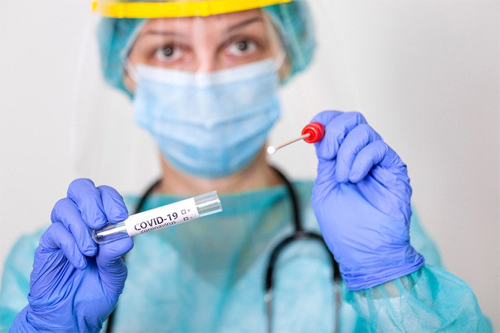WHO changes PCR Test criteria to cover-up false positives
The World Health Organization (WHO) has changed its PCR test criteria to cover-up false positives and cautioned experts not to rely solely on the results of a PCR test to detect the coronavirus.

In updated guidance published on Jan. 20, the WHO said that lab experts and health care practitioners should also consider the patient’s history and epidemiological risk factors alongside the PCR test in diagnosing the coronavirus.
The new guidance could result in significantly fewer daily cases, the false positive cases that created an environment of panic and fear which experts have been warning since last year.
“Most PCR assays are indicated as an aid for diagnosis, therefore, health care providers must consider any result in combination with timing of sampling, specimen type, assay specifics, clinical observations, patient history, confirmed status of any contacts, and epidemiological information,” the guidance says.
It’s unclear why the health agency waited over a year to release the new directive when the medical community already advised against it.
Last year, a Portuguese appeals court had ruled that PCR tests are unreliable and that it is unlawful to quarantine people based solely on a PCR test.
The court stated, the test’s reliability depends on the number of cycles used and the viral load present. Citing Jaafar et al. 2020, the court concludes that: “if someone is tested by PCR as positive when a threshold of 35 cycles or higher is used (as is the rule in most laboratories in Europe and the US), the probability that said person is infected is less than 3%, and the probability that said result is a false positive is 97%.”
The court further notes that the cycle threshold used for the PCR tests currently being made in Portugal is unknown.
The threshold cycles used in PCR tests in India is between 37 and 40, which makes the reliability of the PCR test less than 3% and the false positive rate as high as 97%.
In a Bombshell Conference, Anthony Fauci also stated that COVID PCR tests ran above 35 cycles are useless.
It is also important to remember PCR was invented as a way to create copies of genetic material. PCR was never intended to be a diagnostic tool.
As GreatGameIndia reported earlier, the standard coronavirus tests threw up a huge number of positive cases daily. These tests are done based on faulty WHO protocols which are designed to include false positives cases as well.
This fact about false positives of PCR Tests was first noted in public by Dr. Beda M. Stadler, a Swiss biologist, emeritus professor, and former director of the Institute of Immunology at the University of Bern.
“So if we do a PCR corona test on an immune person, it is not a virus that is detected, but a small shattered part of the viral genome. The test comes back positive for as long as there are tiny shattered parts of the virus left. Correct: Even if the infectious viruses are long dead, a corona test can come back positive, because the PCR method multiplies even a tiny fraction of the viral genetic material enough [to be detected].”
Earlier, the WHO’s testing protocol was even questioned by Finland’s national health authority. WHO had called on countries to test “as many patients as possible” for coronavirus.
Finland ran out of testing capacity and began limiting coronavirus tests to the most vulnerable groups and healthcare personnel only. Finland’s national health authority said that testing people with mild symptoms would be a waste of healthcare resources.
In a startling disclosure, Finland’s head of health security, Mika Salminen dismissed WHO advisory saying the “WHO doesn’t understand pandemics” and that “their Coronavirus testing protocol is illogical and doesn’t work”.
So, if the WHO’s testing protocols are indeed based on the most reliable, accurate and well sourced technologies and research methodologies available worldwide, shouldn’t they have known about its negligible effectiveness and its impact in causing panic and chaos? Indeed the WHO knows it doesn’t work and moreover this is not the first time such criticisms have been voiced.
In the past in 2010, the WHO was caught faking a pandemic and was forced to admit that its methodology of measuring the virality or the spread of the disease, instead of its severity was incorrect.
